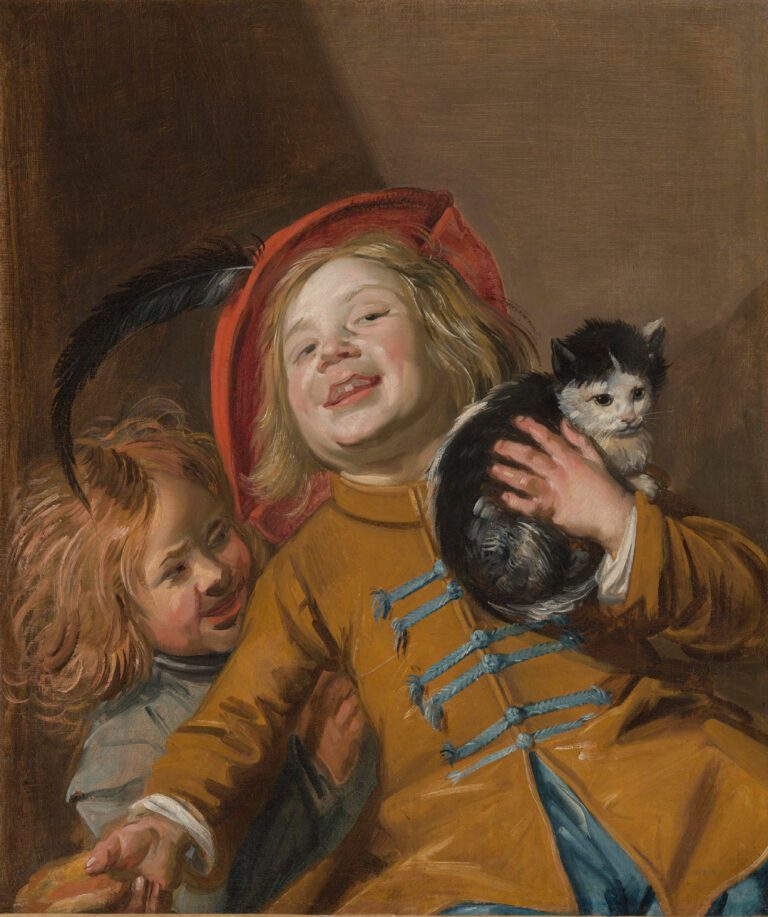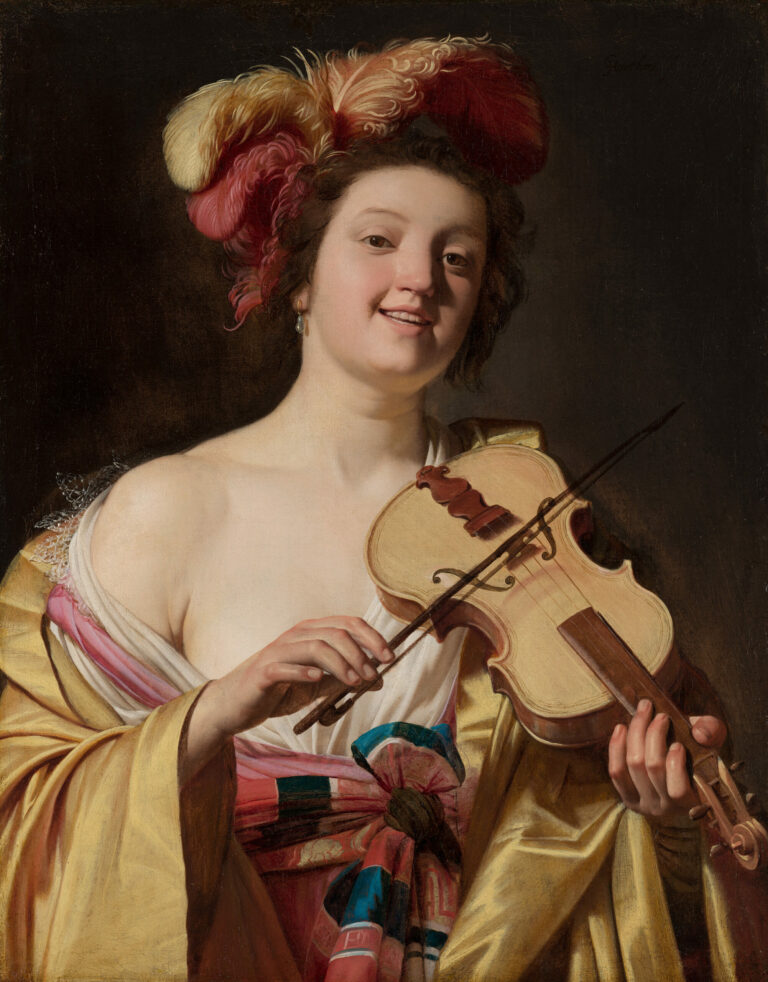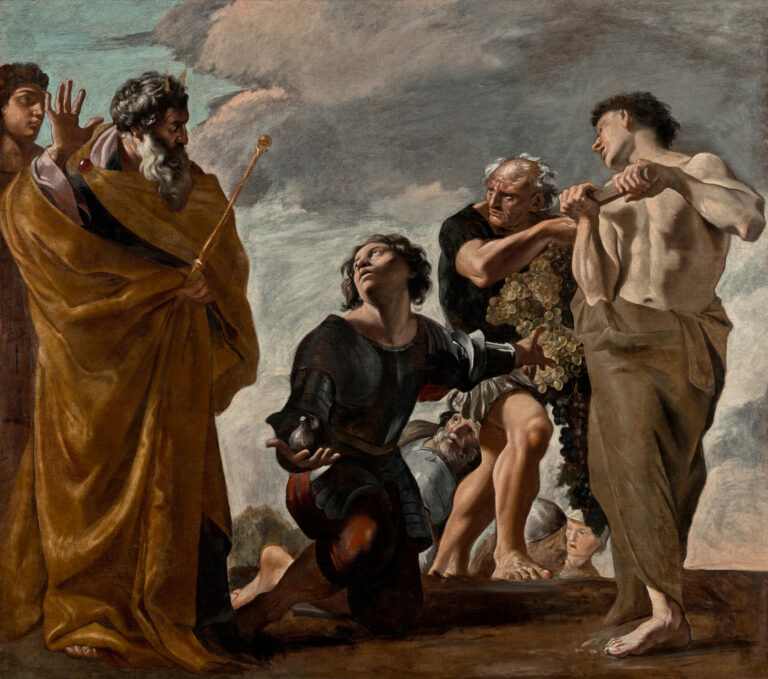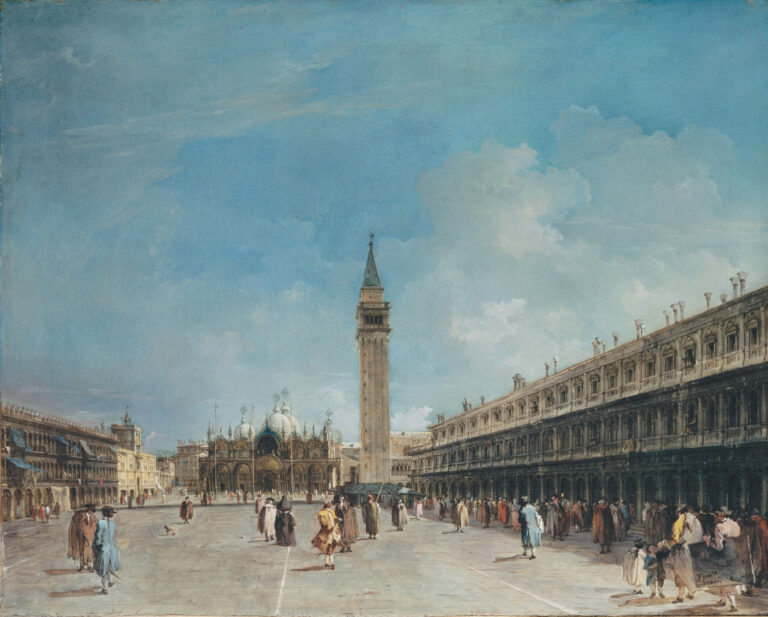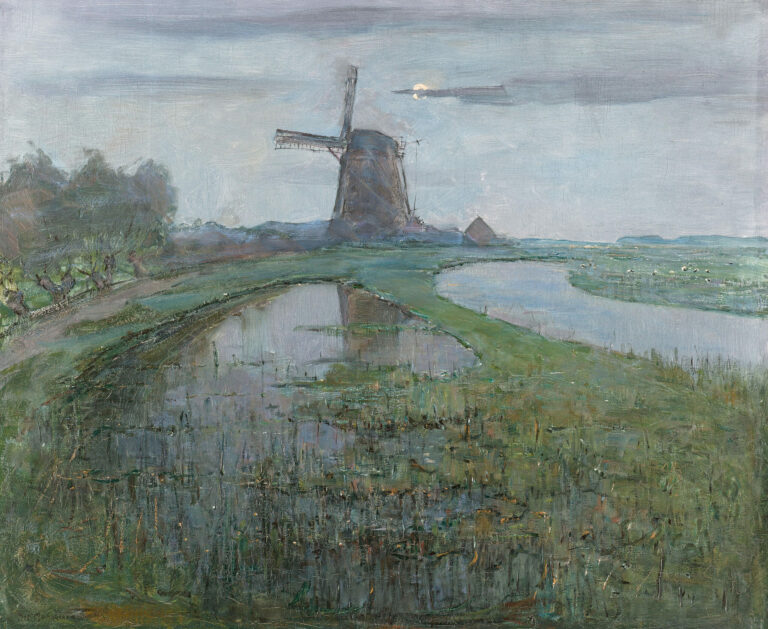
El Greco brilliantly demonstrates here his genius for dramatic and mystical compositions.
The scene, drawn from the Book of Revelation (John 6:9-10), depicts figures soaring heavenward in a vertiginous spiritual choreography.
The painting is dominated by a figure in sumptuous turquoise blue robes, while a group of nude figures, representing the souls of martyrs, rises in a spectacular ascending movement. The chromatic palette, characteristic of the master, plays with striking contrasts between cool and warm tones, cerulean blues and golden ochres, creating a supernatural atmosphere.
The elongated bodies, El Greco’s stylistic signature, appear to be consumed in their mystical momentum, transcending their materiality to reach a pure spiritual dimension.
Further Context
- The Vision of Saint John by El Greco, c. 1608–1614
- 87 1/2 x 76 in. (222.3 x 193 cm)
- The Metropolitan Museum of Art, Fifth Avenue, New York, displayed in Gallery 619
- https://www.metmuseum.org/art/collection/search/436576
Domenikos Theotokopoulos, known as El Greco (1541-1614), was one of the most singular artists of the late Renaissance. Born and trained in Crete, then in Venice and Rome, he finally settled in Toledo where he developed a unique style—an extraordinary fusion of Byzantine art, Italian Mannerism, and Spanish spirituality.
His painting is characterized by elongated figures, supernatural light, and intense colors. Long considered eccentric, his work was rediscovered in the mid-19th century, influencing the Romantics and later modern art, particularly Expressionism and Cubism. His personal and mystical artistic vision makes him a precursor to modernity.

